4.09.2020
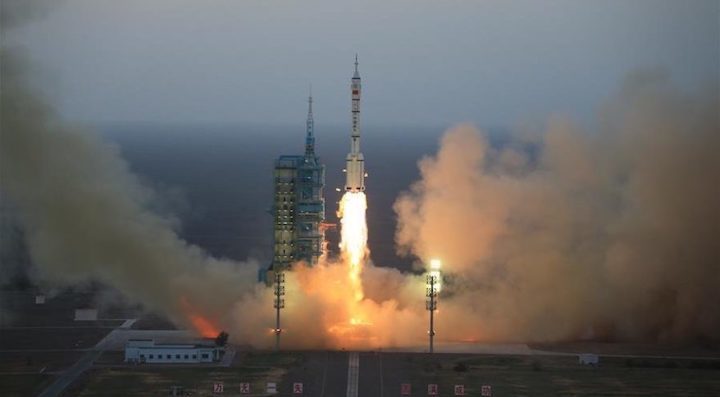
HELSINKI — China launched an experimental reusable spacecraft Friday following months of low-key preparations at the Jiuquan Satellite Launch Center.
A Long March 2F launch vehicle delivered the spacecraft into orbit following launch at an unspecified time.
Chinese state media Xinhua reported mission success just under three hours after the opening of the launch window at 1:23 a.m. Eastern. The ‘reusable experimental spacecraft’ is currently in orbit carrying out tests.
“After a period of in-orbit operation, the spacecraft will return to the scheduled landing site in China. It will test reusable technologies during its flight, providing technological support for the peaceful use of space,” the Xinhua report stated.
Airspace closure notices released Thursday provided the first indication of an imminent launch. No images of the spacecraft nor the launch have so far been released. An apparent higher-than-usual level of security surrounding the mission also prevented bystander images appearing on social media.
China stated in 2017 that it aimed to test a reusable spaceplane in 2020. The United States currently has its U.S. Air Force X-37B spaceplane carrying out its sixth mission in orbit.
Apparent modification work had been carried out on the launch tower for the Long March 2F launch vehicle in recent months.
This led to speculation that the work would allow a launch with a payload wider than a standard Long March 2F mission. A winged space vehicle could require such preparations to be undertaken.
A spaceplane project was included in a 2017 ‘space transportation roadmap’ released by the China Aerospace Science and Technology Corp. (CASC), the country’s main space contractor. A goal of 2030 for developing a single-stage-to-orbit (SSTO) spaceplane was also noted. The plans also included fully reusable launch vehicles and, around 2045, a nuclear-powered shuttle.
Chen Hongbo, from CASC’s China Academy of Launch Vehicle Technology (CALT), told Science and Technology Daily in 2017 that reusable spacecraft would be capable of carrying both crew and payloads. Chen stated that some vehicles would have the characteristics of both aircraft and spacecraft.
After an inaugural flight around 2020, several flights will be conducted to verify rapid re-launch and repeated use capabilities, Chen said. The stated aim of the project is to reduce the cost of access to space.
The China Aerospace Science and Industry Corp. (CASIC), another giant state-owned enterprise, is working on its own spaceplane, named Tengyun.
“Unlike rocket recycling adopted by the SpaceX, the space plane can take off from an ordinary airport to transport spacecraft into the orbit. It will bring about revolution for the future aerospace transportation,” CASIC’s Zhang Hongwen told CCTV in 2018.
The Long March 2F has launched 14 times, lofting crewed and uncrewed Shenzhou missions and two Tiangong space labs.
Yuanwang space tracking ships were already positioned in areas in the South Atlantic and Indian Oceans to support a spacecraft launching into a roughly 45 degree inclination orbit from Jiuquan.
Quelle: SN
+++
China launches reusable experimental spacecraft
China successfully launched a reusable experimental spacecraft with a Long March-2F carrier rocket from the Jiuquan Satellite Launch Center in northwest China Friday.
After a period of in-orbit operation, the spacecraft will return to the scheduled landing site in China. It will test reusable technologies during its flight, providing technological support for the peaceful use of space.
Friday's launch was the 14th mission of the Long March-2F carrier rocket. Enditem
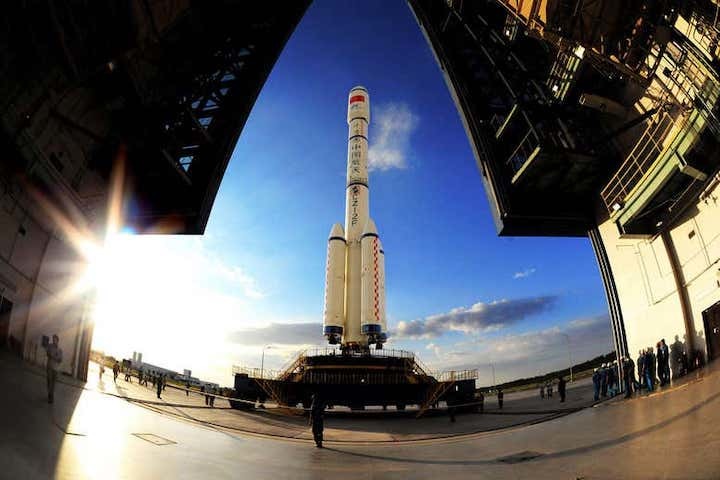
Imaginechina Limited / Alamy
China appears to have launched an experimental space plane earlier this morning, which may be the precursor to a vehicle that can carry humans to and from space.
Early on 4 September, China is thought to have launched a Long March 2F rocket from their Jiuquan Satellite Launch Center in the Gobi Desert. While there was no official announcement prior to the launch, several observers noticed air traffic restrictions that indicated a launch was taking place.
The state-run Xinhua News Agency later confirmed the launch, saying that a “reusable experimental spacecraft” was on board that would “test reusable technologies during its flight, providing technological support for the peaceful use of space.”
Orbital data later confirmed that the vehicle had been placed in an orbit up to 350 kilometres in altitude, a similar height to China’s previous crewed flights. Much about the launch remains shrouded in mystery, however, including the size of the vehicle, how long it will remain in space and what it will do in orbit.
China is known to have been working on space plane technology for the past decade, with the country announcing in 2017 that it aimed to fly such a vehicle by 2020. “There have been some clues that this mission might happen,” says Andrew Jones, a journalist who covers the Chinese space programme, including modifications to the launch tower and a potential mission patch referencing the spacecraft. “But the actual timing was a surprise.”
Such a vehicle could take Chinese astronauts to and from orbit, possibly to a planned future Chinese space station. Jean Deville, a space analyst who tracks China’s activities, says a reusable crewed space plane could be part of China’s ambitious crewed space programme, which includes its operational Shenzhou spacecraft and a new deep space vehicle. “A space plane is an ideal technology for atmospheric re-entry due to less brutal accelerations for the human body,” she said.
Another possibility is that the vehicle is more similar to the secretive American X-37B space plane, a small uncrewed reusable craft built by Boeing, which has flown to space multiple times on missions lasting more than a year, performing unknown activities in orbit. “There [are] undeniable military uses for a space plane,” says Deville. “China has shown a strong interest in developing these technologies.”
Regardless of its true purpose, the launch is another signal of China’s growing launch capabilities. “If you look at what they’re doing in the commercial sector, promoting innovation and low-cost launch vehicles, this is part of a wider context of Chinese plans for space transportation,” says Jones. “But it’s hard to say how big this [space plane] is in China’s plans.”
Now, observers will be watching keenly to get more information about the vehicle. “We don’t know if this is a scaled version to test certain technologies, or a full-sized version,” he says. “It’s so vague, so secretive. It’s very interesting, but it’s also quite frustrating.”
Quelle: NewScientistChina launches experimental spaceplane
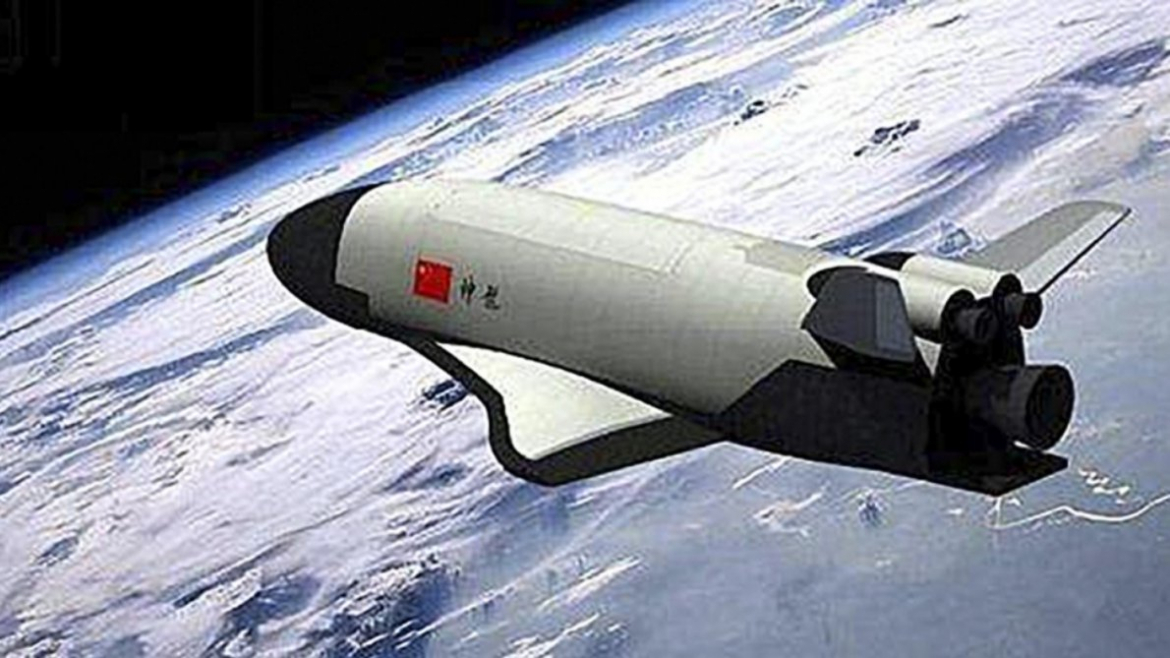
China launched a new experimental reusable space vehicle on Thursday from the Jiuquan Satellite Launch Center using a Long March-2F/T – Chang Zheng-2F/T – launch vehicle. Launch from the LC43/91 launch complex, under a veil of secrecy with no official launch photos or even a launch time disclosed.
Chinese media emitted a laconic report referring, that “the test spacecraft will be in orbit for a period of time before returning to the domestic scheduled landing site. During this period, it will carry out reusable technology verification as planned to provide technical support for the peaceful use of space.”
It was previously announced that the next launch of the LM-2F rocket would be the first major scientific research and experimental mission other than crewed spaceflight after Shenzhou-11, being the basis for the successful implementation of subsequent crewed spaceflight projects and a key to future aerospace technology.
The train with the various elements of the launcher departed the factory on February 29. It arrived at the train station before being transferred to the dedicated rail line to Jiuquan on March 2.
At this time, there are no NOTAMs published anticipating the return and landing.
Roots in Shenlong?
On December 11, 2007, the Chinese media published an interesting image of a winged spacecraft mounted on a wind of am H-6K bomber. This was the first public acknowledgment that China was trying to develop a reusable winged space system very similar to the X-37.
Codenamed ‘Project 863-706’, the Shenlong Project had at the time its first launch scheduled between 2006 and 2010. In fact, Shenlong was possibly a technology development program for the actual space-worthy vehicle.
Launch vehicle and launch site:
The new experimental spaceplane was launched by the Long March-2G/T3, a variant of the launch vehicle usually used for the crewed Shenzhou program.
This launch vehicle, developed by the China Academy of Launch Vehicle Technology under the China Aerospace Science and Technology Corporation, is different from the original ‘Shenjian’ (Devine Arrow) version developed from the Chang Zheng-2E launch vehicle.
That rocket, in turn, was based on the proven flight technology of the Chang Zheng-2C.
Conceptual design work on the CZ-2E launch vehicle began in 1986. The rocket entered into the world launch services market following a successful test flight in July 1990.
A substantial difference for this rocket is the absence of the launch escape tower, a more bulbous fairing and an improved separation sequence, with a more precise orbit insertion accuracy.
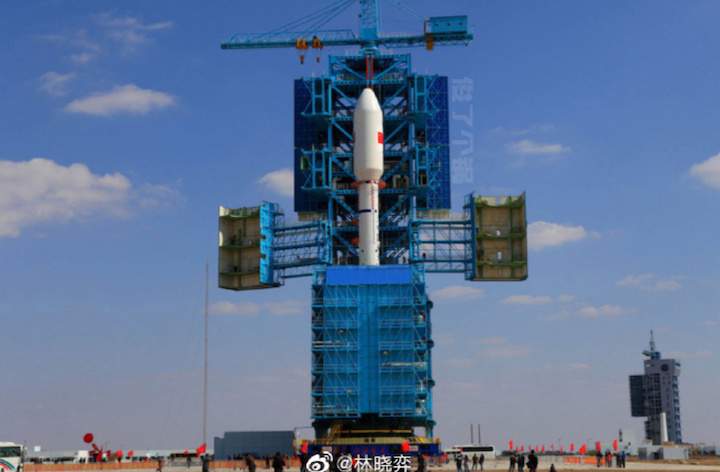
This is possible with the introduction of improved navigation systems and a complex guidance system that features real-time inputs to the rocket to orbit parameters and uses GPS data outside the measurement error correction parameters to achieve double redundancy. Also, more propellant is loaded on the boosters, thus increasing the firing time.
Like the CZ-2F/G, the CZ-2F/T version is a two-stage launch vehicle that uses four strap-on boosters during the first stage phase.
The overall length is 52.0 meters, with a 3.35-meter core stage and a maximum diameter of 8.45 meters. At launch, it has a 493,000 kg mass, capable of launching 8,600 kg cargos into a low Earth orbit.
For the CZ-2F launch vehicle, the LB-40 strap-on boosters have a length of 15.326 meters, a diameter of 2.25 meters, a gross mass of 40,750 kg and an empty mass of 3,000 kg.
Each booster is equipped with a fixed nozzle YF-20B engine that consumes UDMH/N2O4 developing 740.4 kN of sea lever thrust. Burn time is 127.26 seconds.
The L-180 first stage has a length of 28.465 meters, a diameter of 3.35 meters, a gross mass of 198,830 kg and an empty mass of 12,550 kg. It is equipped with a YF-21B engine pack that consists of four YF-20B engines that consume UDMH/N2O4 developing 2,961.6 kN of sea lever thrust. Its burn time is 160.00 seconds.
The L-90 second stage has a length of 14.223 meters, a diameter of 3.35 meters, a gross mass of 91,414 kg and an empty mass of 4,955 kg. It is equipped with a YF-24B engine pack that consists of one fixed nozzle YF-22B main motor with a swiveling vernier four YF-23B engines.
The engines consume UDMH/N2O4 developing 738.4 kN (main engine) and 47.07 kN (vernier) of vacuum thrust. Total burn time is 414.68 seconds (301.18 seconds burn time for the main engine).
With ignition taking place at the end of the usual countdown in Chinese, the rocket began its journey into the Jiuquan sky.
The separation of the four strap-on liquid boosters takes place at around 155 seconds into the flight. The separation was followed by a stabilization process four seconds later, with the first stage separating right after together with stage two ignition.
Fairing separation takes place around 3 minutes and 35 seconds into the flight. The second stage pushed the secretive cargo into orbit, ending its performance at 9 minutes and 42 seconds. Spacecraft separation came a few seconds later.
The Jiuquan Satellite Launch Center, in Ejin-Banner – a county in Alashan League of the Inner Mongolia Autonomous Region – was the first Chinese satellite launch center and is also known as the Shuang Cheng Tze launch center.
The site includes a Technical Centre, two Launch Complexes, Mission Command and Control Centre, Launch Control Centre, propellant fuelling systems, tracking and communication systems, gas supply systems, weather forecast systems, and logistic support systems.
Jiuquan was originally used to launch scientific and recoverable satellites into medium or low earth orbits at high inclinations. All Chinese crewed missions are launched from this site.
The LC-43 launch complex, also known as the South Launch Site (SLS), is equipped with two launch pads: 91 (901) and 94 (603). Launch Pad 91 is used for the crewed program for the launch of the Long March-2F launch vehicle (Shenzhou and Tiangong).
Launch Pad 94 is used for uncrewed orbital launches by the Long March-2C, Long March-2D and Long March-4C launch vehicles.
Other launch zones at the launch site are used for launching the Kuaizhou, the CZ-11 Chang Zheng-11 and commercial launch vehicles using solid rocket motors.
The first orbital launch took place on April 24, 1970 when the CZ-1 Chang Zheng-1 rocket launched the first Chinese satellite, the Dongfanghong-1 (04382 1970-034A).
Quelle: NS
----
Update: 7.09.2020
.
China's first reusable spacecraft lands after 2-day flight
China says its first reusable spacecraft has landed after two days in orbit, a possible step toward lower-cost space flight
BEIJING -- China’s first reusable spacecraft landed Sunday after two days in orbit, a possible step toward lower-cost space flight, the government announced.
The secretive, military-run space program has released few details of the craft, which was launched Friday aboard a Long March 2F rocket from the Jiuquan Satellite Launch Center in China’s desert northwest.
The craft landed as planned at Jiuquan, the official Xinhua News Agency said.
State media have yet to publish any photos. The craft's size and shape are unclear.
The flight “marks an important breakthrough in our country’s research on reusable spacecraft” that promise a “more convenient and inexpensive way” to reach space, Xinhua said.
China fired its first astronaut into orbit in 2003 and has launched a space station. Last year, it became the first country to land a robot rover on the moon's little-seen far side. A probe carrying another robot rover is en route to Mars.
The United States and the former Soviet Union both flew reusable spacecraft.
The U.S. space shuttle flew 134 missions from the 1980s until 2011. Since then, the U.S. military has developed the X-37, a robot glider that made its sixth flight in May.
The Soviet space plane, Buran, orbited the Earth twice during its single uncrewed flight in 1988.
Quelle: abcNews
+++
China's reusable experimental spacecraft back to landing site
China's reusable experimental spacecraft on Sunday returned to the scheduled landing site after a two-day in-orbit operation.
The spacecraft was launched with a Long March-2F carrier rocket from the Jiuquan Satellite Launch Center in northwest China on Sept. 4.
The successful flight marked the country's important breakthrough in reusable spacecraft research and is expected to offer convenient and low-cost round trip transport for the peaceful use of the space. Enditem
Quelle: Xinhua
+++
China hails ‘key breakthroughs’ as reusable spacecraft returns safely to Earth
- Experimental vessel lands safely after spending two days orbiting the planet
- Details of craft remain secret, but one source has hinted that it may act like the US X-37B space plane
“The success indicated that China has achieved key breakthroughs in researching the spacecraft’s reusable technologies. It will provide more convenient and cheaper transport for the peaceful use of space in the future,” Xinhua said.
No details of the spacecraft were revealed in the report, but a military source previously told the South China Morning Post that “maybe you can take a look at the US X-37B”.
The X-37B is an unmanned space plane that operates like a smaller version of Nasa’s Space Shuttle.
“There were many firsts in this launch,” the military source said of the launch of the reusable spacecraft, which was shrouded in secrecy.
“The spacecraft is new, the launch method is also different. That’s why we needed to make sure there is extra security.”
The Chinese spacecraft was launched with a Long March-2F rocket from the Jiuquan satellite centre in Inner Mongolia on Friday.
Its safe return has become one of the hottest topics on Weibo, China’s equivalent to Twitter. In addition to tens of thousands likes, some users also fuelled the speculation that it would function like the now-retired Space Shuttles.
Speaking at the 2017 Global Space Exploration Conference, Liu Shiquan, deputy general manager of the state-owned China Aerospace Science & Industry Corporation, said the company would focus on developing a new generation of spacecraft that could take off or land horizontally and be reused.
He mentioned at that time that progress had been made in ground tests of key technologies.
In May, China honoured a research team for its achievement in developing a “hypersonic pre-cooled aerospace engine” that could be used to power a reusable spacecraft.
Quelle: South China Morning Post
+++
Reusable spacecraft launched by China lands successfully, state media reports
Breakthrough could lead to cheaper round-trips to space although no details were given on techologies tested
An experimental reusable spacecraft launched into orbit two days ago by China has successfully returned to a designated site on Sunday, marking a breakthrough that could lead to cheaper round-trips to space, the official Xinhua News Agency reported.
The mission had been kept low-key, and state media had yet to publish photographs or video footage of both the launch and landing of the spacecraft. No details were given on the techologies that had been tested.
Chinese social media has been rife with speculation over the spacecraft, which some commentators compared to the US Air Force's X-37B, an autonomous spaceplane made by Boeing that can remain in orbit for long periods of time before flying back to Earth on its own.
Three years ago, China said it would launch a spacecraft in 2020 that can fly like an aircraft and would be reusable, increasing the frequency of launches and lowering mission costs.
It is not known if the experimental spacecraft launched by China was a fixed-wing craft like the US Space Shuttle. If it was similar to the X-37B, it would be about a fifth of the Space Shuttle in size.
The Chinese spacecraft was deployed into orbit on Friday by the Long March 2F, a family of rockets that have transported Shenzhou spacecraft into orbit on both crewed and uncrewed missions over the years.
A Chinese national independently travelled to space for the first time in 2003 onboard the Shenzhou.
Quelle: The Telegraph
----
Update: 8.09.2020
.
Chinese reusable experimental spacecraft releases object before returning to Earth
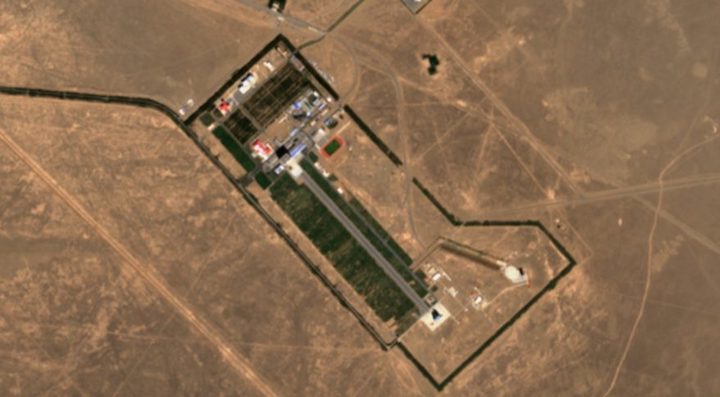
HELSINKI — A Chinese reusable experimental spacecraft released an unknown object before deorbiting Sunday, ending a secretive two-day mission in low Earth orbit.
The spacecraft launched from the Jiuquan Satellite Launch Center in the Gobi Desert Thursday atop a Long March 2F rocket. Airspace closure notices issued a day earlier provided the only clue to the timing and nature of the mission.
Landing took place as scheduled Sunday according to a terse state media release. Neither images nor details of the ‘reusable experimental spacecraft’ were provided.
“The successful flight marked the country’s important breakthrough in reusable spacecraft research and is expected to offer convenient and low-cost round trip transport for the peaceful use of the space,” Xinhua stated.
Somewhat in contrast to the use of ‘peaceful use of space’ to describe the project, the nature of both the mission and spacecraft remain closely guarded.
An additional matter of intrigue is provided by the apparent release of an object into orbit by the spacecraft ahead of its deorbit burn. US space surveillance catalogued the new object, designated NORAD ID 46395 (2020-063G COSPAR ID), assigning it to the Long March 2F launch.
The experimental spacecraft orbited in a 331 by 347-kilometer orbit inclined by 50.2 degrees. The new object is in a similarly-inclined 332 by 348-kilometer orbit.
Analysts suggest the object was released two orbits before the experimental spacecraft deorbited. No details of the nature of the object have so far been released by China or US space tracking.
Chinese crew capsules have previously released ‘Banxing’ small companion satellites for monitoring. An experimental new-generation crew spacecraft released a test inflatable reentry and descent technology module in May. The experiment suffered an anomaly during reentry.
Chinese reusable experimental spacecraft
So far only distant amateur footage of the launch has emerged. Apparent footage shows a payload fairing atop of a Long March 2F rather than an exposed spacecraft.
Earlier statements from China’s main space contractor reveal possibly related projects. Comments in 2017 from Chen Hongbo, an official with China Academy of Launch Vehicle Technology (CALT), may in particular provide potential clues as to capabilities.
Chen stated that reusable spacecraft, expected to have a test flight around 2020, would be capable of carrying both crew and payloads. Chen stated that some vehicles would have the characteristics of both aircraft and spacecraft, suggesting a fixed wing space vehicle.
While launching vertically like a traditional rocket, Chen describes a concept in which a second rides on the back of the first stage. Both stages can later land horizontally. Renders of various concepts and project names have previously appeared online.
The short duration of the recent mission is consistent with earlier stated goals of testing ‘rapid re-launch and repeated use capabilities’. Several further flights were expected to follow an initial test.
The use of the Long March 2F, a crew-rated launch vehicle, suggesting a test of the upper stage only. The launcher can loft a payload of just over 8 metric tons to LEO.
It was the first Long March 2F launch since the crewed Shenzhou-11 mission in 2016. The next flight will launch Shenzhou-12 to the core module of the Chinese Space Station in 2021.
Chen says the new space vehicle is designed to be reused more than 20 times. This will initially reduce launch costs to one-fifth of current levels and potentially to one-tenth. The launch cycle of the vehicle will also be greatly shortened.
The Science and Technology Daily article from 2017 carrying Chen’s remarks notes that while the first stage of a Falcon 9 lands vertically and is recovered and reused, the same has not been achieved with the second stage.
Other reusable spacecraft or spaceplane projects are under consideration in China. The China Aerospace Science and Industry Corp. (CASIC), another giant state-owned enterprise, is working on its own spaceplane, named Tengyun.
“Unlike rocket recycling adopted by SpaceX, the spaceplane can take off from an ordinary airport to transport spacecraft into orbit. It will bring about a revolution for the future aerospace transportation,” CASIC’s Zhang Hongwen told CCTV in 2018.
Commercial launch company iSpace has also presented renders of a spaceplane concept. The winged vehicle would launch vertically atop of a Hyperbola liquid-propellant rocket.
Quelle: SN
+++
